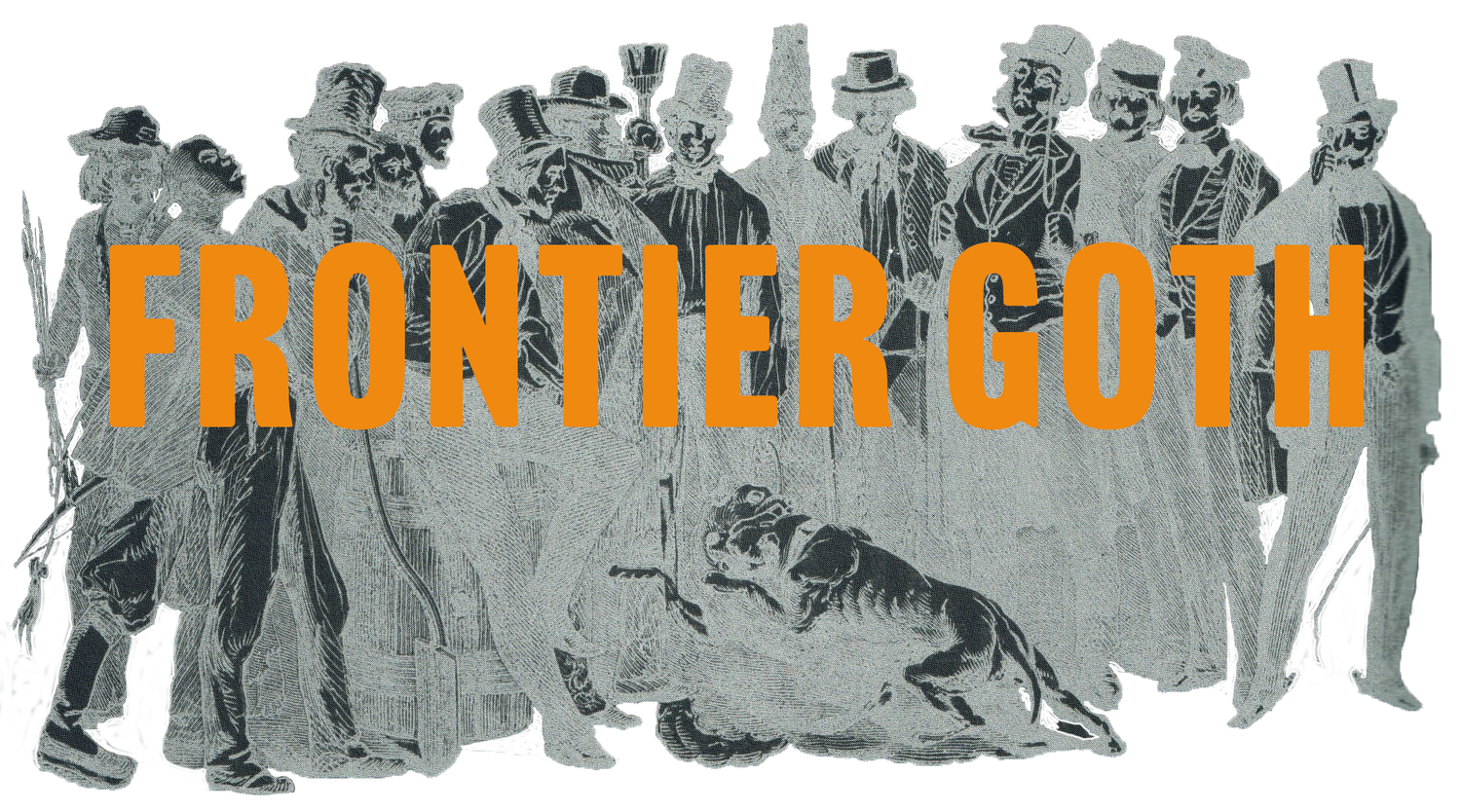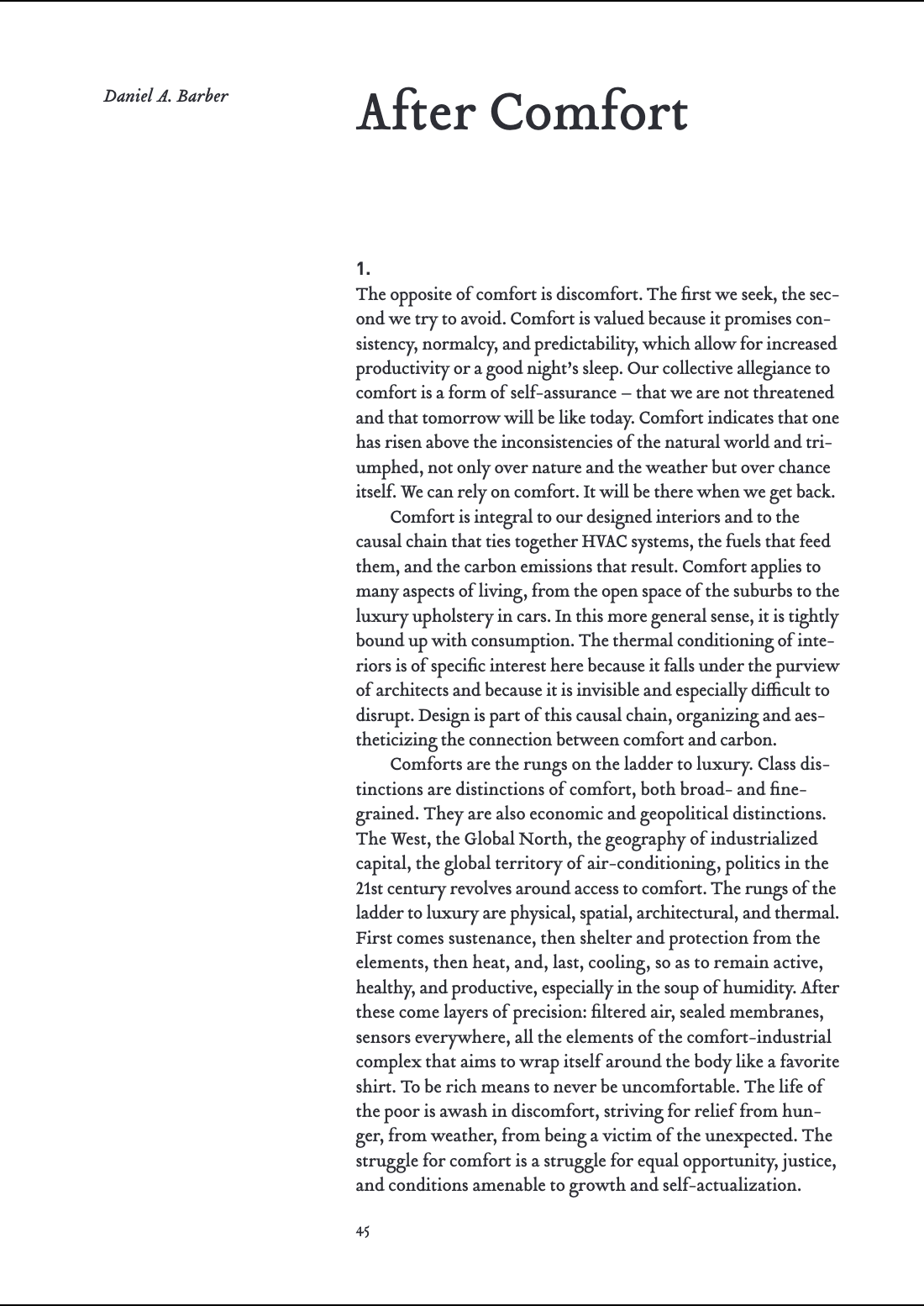After Comfort by Daniel A. Barber
““Comforts are the rungs on the ladder to luxury. Class distinctions are distinctions of comfort, both broad- and fine-grained. They are also economic and geopolitical distinctions. The West, the Global North, the geography of industrialized capital, the global territory of air-conditioning, politics in the 21st century revolves around access to comfort. The rungs of the ladder to luxury are physical, spatial, architectural, and thermal. First comes sustenance, then shelter and protection from the elements, then heat, and, last, cooling, so as to remain active, healthy, and productive, especially in the soup of humidity. After these come layers of precision: filtered air, sealed membranes, sensors everywhere, all the elements of the comfort-industrial complex that aims to wrap itself around the body like a favorite shirt. To be rich means to never be uncomfortable. The life of the poor is awash in discomfort, striving for relief from hunger, from weather, from being a victim of the unexpected. The struggle for comfort is a struggle for equal opportunity, justice, and conditions amenable to growth and self-actualization.”
&
”Every little click and hum of the air conditioner kicking in, every creak of the radiator, is a slow, extended, collective symphonic lament accompanying the decline of civilization. Comfort is destroying the future, one click and hum at a time. Comfort relies on its invisibility: you don’t see it, you pretend not to hear it. It’s just there. Touch the buttons or the screen. Tell your smart speaker to adjust the temperature. Not only is the HVAC system hidden, so is the boiler, the fuel, the network of extraction, the labor exploitation, the carbon cost of distribution, the toll of pollution and the toxification of the air. Comfort is normal, the epitome of normative; regulated and rationalized, embedded in construction systems and industrial supply chains. ASHRAE has long since taken command.”
&
“The built world is contingent. It was built according to specific socioeconomic conditions, collective desires, and cultural interests; it can be unbuilt and rebuilt according to new conditions, new desires, and new frameworks for cultural elaboration. Such reconstructions also reimagine relationships to resources, economy, exchange, and equity. Architecture’s new ambition should be to condition humans to be uncomfortable.”
-Daniel A. Barber, 2019


